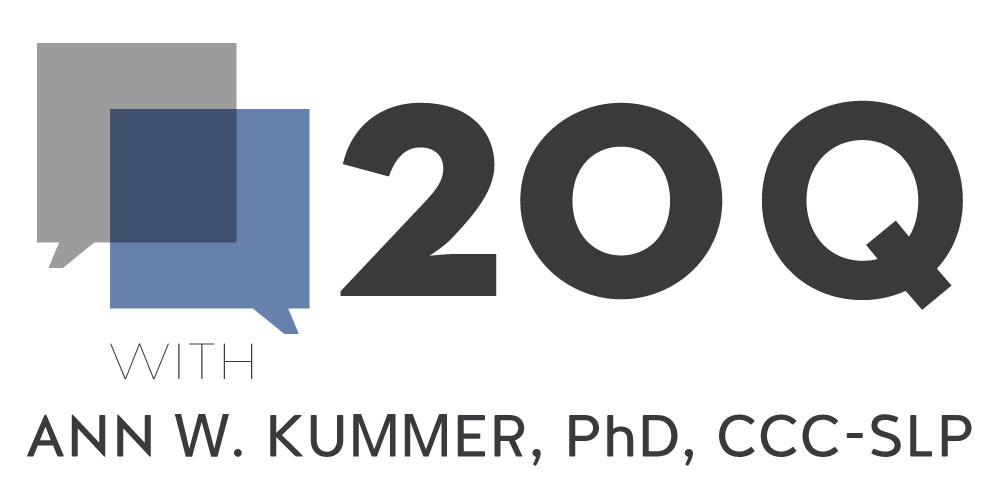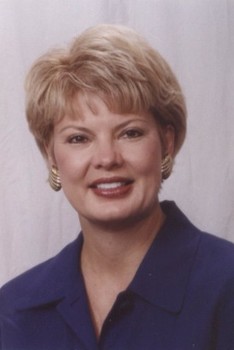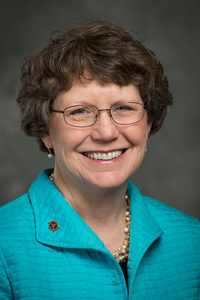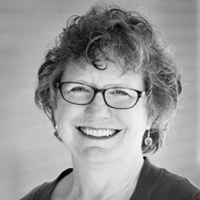From the Desk of Ann Kummer

The Common Core State Standards (CCSS) is an initiative that establishes consistent education standards in language arts and math across the United States. As such, it describes the knowledge that students in grades K-12 should obtain by the end of each grade. The ultimate goal is to ensure that students are equally prepared to enter college or the workforce upon graduation.
School-based SLPs, and in fact— all SLPs who work with children, need to be knowledgeable of this initiative and understand their roles and responsibilities in aligning services with these standards. In particular, SLPs must work to ensure the success of students with communication disorders, as well as English language learners, by designing focused interventions and actively collaborating with educators.
Because the CCSS is such an important topic for so many of us, I am delighted that Lissa A. Power-deFur, PhD, CCC-SLP, ASHA-F has agreed to share her knowledge about this topic with us through this 20Q article!
Dr. Power-deFur is a professor in the communication sciences and disorders program at Longwood University in Virginia. She designed and has taught a course on public school methods, which focuses on supporting children's mastery of the language expectations of the Common Core State Standards. In her clinical role at Longwood, she has collaborated with local school districts for service delivery. She regularly presents at both the state and national level on the integration of education standards into intervention for students with speech-language impairment. She has served as a state education advocacy leader and as a member of numerous education-related committees at ASHA. She has recently served as the ASHA 2014-2016 vice president of standards and ethics in speech-language pathology. It is noteworthy that Dr. Power-deFur is a Fellow of the American Speech-Language-Hearing Association (ASHA) and also of the Speech-Language-Hearing Association of Virginia. In addition, she received the ASHA Leader Outstanding Service Award for her 2011 article on special education eligibility.
Based on her interests and extensive background, Dr. Power-deFur has become an expert in CCSS. In fact, she has published a very valuable resource book for SLPs on this topic. This book, called Common Core State Standards and the Speech-Language Pathologist: Standards-Based Intervention for Special Populations (Plural Publishing), describes the history and composition of the CCSS. It goes on to describe how SLPs can develop interventions to meet student-specific needs.
This 20Q article provides some key facts and useful information from Dr. Power-deFur regarding this very important topic. It will be of great interest to all speech-language pathologists who work in pediatrics.
Now...read on, learn and enjoy!
Ann W. Kummer, PhD, CCC-SLP, FASHA, 2017 ASHA Honors
Contributing Editor
20Q: Education Standards: Is There a Role for Speech-Language Pathologists?
 Lissa Power-deFur
Lissa Power-deFurLearning Outcomes
After this course, readers will be able to:
- Explain the purpose of education standards
- Describe the communication expectations of education standards
- Identify how standards can and cannot be used in special education eligibility and IEP development
1. What are education standards?
Education standards are expectations for what studentsshould master in each grade, in the core areas of reading, language arts, and mathematics. (Many states have standards in additional content areas). Standards are developed sequentially, building on skills acquired in prior years.
Standards are designed to be benchmarks of learning, spelling out exactly what students should know and be able to do at the end of each grade level. The standards are applicable to all students, including students with disabilities. (See question 8 for information about for students with disabilities).
2. Why are standards needed? Don’t teachers know what to teach?
At the beginning of the standards movement in the 1990s, business and higher education communities identified gaps in students’ knowledge and skills as they entered higher education and the work force. They advocated for creation of standards to enable a common understanding of what students should know to be college and career ready.
Standards also enable consistency across education settings. Even the best teachers have challenges assuring they know what students should have learned in prior years. Prior to the establishment of standards, different schools (and even classrooms) had different expectations for content in particular years. The standards therefore become the basis for what is taught across classrooms in multiple districts and states.
Our mobile society presents academic challenges to the many students that live in multiple states during their schooling. U.S. Census data regarding general mobility indicates that in 2009, 15.4 percent of the population lived in a different residence than it did in 2008. These students are moving within districts, within states, and to other states. This mobility creates gaps in these students’ achievement, as prior to establishing standards, certain content would be taught in a given year in one school/district and in another year in a different district. With the adoption of the standards, student transience no longer carries the risk that key content will be missed or other content will be needlessly repeated.
3. Why do speech-language pathologist (SLPs) need to know about the standards?
Education standards are the expectations of students during their K-12 experience. As the role of the school SLP is to support students’ education success, standards serve as valuable tool for SLPS to determine the effect of students’ speech-language impairment on academic performance. In the same way that SLPs tailor their work with adults to enable transfer to the work environment, SLPs should tailor our work with school-age children to facilitate their attainment of the standards. It is the responsibility of our general education partners to ensure students master the standards. However, as part of the education team, it is important for SLPs to link our work to the standards. In this way, we provide extensions to the general education environment, support students’ mastery of communication-rich standards, and provide opportunities for students to apply their developing speech-language skills in their most natural environment – the classroom.
Speech-language pathologists are among the education team members who use the standards as benchmarks for student expectations. Standards enable SLPs to identify the grade levels at which specific skills are expected (e.g., use of various verb forms or vocabulary), and to facilitate our ability to tailor our intervention to the skills the student needs in the classroom.
4. Weren’t these developed by the Obama administration?
No. Educators first established education standards in the 1990s when states began adopting standards and developing assessments to measure students’ progress toward meeting the standards. Professional organizations developed standards in their disciplines (e.g., English, Social Studies, Mathematics, Science, Health) to serve as models for states in their development and revision of state standards. The proliferation of standards across many states, with the accompanying curricular materials and state assessments, prompted many educators and policy makers to create a common set of standards used in all states (the Common Core State Standards – CCSS). The standards were developed by organizations representing governors and state superintendents with funding from the Bill and Melinda Gates Foundation. The U.S. Department of Education (USDE) and the White House had no involvement in development of standards (although the USDE did provide some incentive funding to states that adopted the standards).
5. Do all states have standards?
Yes. All states have education standards, but not all have adopted the CCSS. Originally adopted by 45 states, 8 currently do not use the CCSS. Other states have tailored the CCSS to those particular states. The use of state-specific standards, in contrast to adoption of the CCSS, reflect the political influence of person who view the CCSS as infringing on the autonomy of state and local education agencies. The current status of states’ adoption of the CCSS can be found at www.corestandards.org.
6. Weren’t standards developed by politicians?
No. Regardless of whether the particular standards are state-specific or the CCSS, they were not developed by politicians. Each set of standards was designed following a common approach – using teams of educators and specialists. Therefore, standards reflect the input of teachers, district-level content specialists, and noted experts in the discipline. As a result, the standards capture what can be taught in the classroom and also reflect the evidence regarding students’ learning.
7. The standards seem pretty challenging. Are they developmentally appropriate?
Yes. The standards are challenging, as the goal was to have high expectations for student achievement. The CCSS are generally considered more rigorous and developmentally appropriate in the area of English Language Arts (Justice, 2013; Marzano and Simms 2013). Standards encompass a hierarchy of language skills from phonological awareness to the ability to understand diverse perspectives, from comprehension of discipline-specific vocabulary to syntactic complexity in speech and text (Ehren, et al, 2012; Rudebusch, 2012). The progression of reading skills is reflected in the reading standards. Developmentally, many skills are first acquired in oral language and then applied to written language. This relationship is preserved in the CCSS.
8. Are the standards inclusive of students with disabilities?
Education standards, including the CCSS, are designed for students in general education, detailing the academic expectations of grades K through 12. The CCSS creators supported the inclusion of students with disabilities in the acquisition of education standards. In its commentary on the standards, the CCSS points out that ability of students with disabilities to meet the standards is based on the expertise of special education personnel and the provision of appropriate instruction, related services and supports.
9. What are the language expectations of the standards?
Both the CCSS and individual state standards have strong expectations in the various aspects of language. The CCSS’s Speaking and Listening standards have a greater emphasis on oral language than previous standards. There are two strands: Comprehension and Collaboration (addressing conversations and social communication) and Presentation of Knowledge and Ideas (addressing skills in presenting information in manners appropriate for the audience). The Reading standards apply the skills needed for to be a strong reader (ideas and details, craft and structure, integration of knowledge and ideas) to a variety of literary and information text. Similarly, the Writing standards expect students to offer and support opinions in a range of writing tasks. The CCSS has a separate set of Language standards with three components: Conventions of Standard English (including parts of speech), Knowledge of Language (including the ability to make effective language choices), and Vocabulary Acquisition and Use.
The CCSS emphasizes oral language and phonological awareness in the primary grades. For example, in kindergarten, students are to develop skills in counting, pronouncing, blending, and segmenting syllables in spoken words. The expectations for proficiency in oral language progresses -- students in grades 9 and 10 should be able to present findings and support their evidence clearly and concisely using a style appropriate to the audience and task. In the vocabulary area, students’ skills advance from mastering morphology (affixes) for understanding meaning to becoming adept at understanding euphemisms, hyperbole and paradox prior to graduation. Students’ skills in the conventions of Standard English develop from early skills in using nouns, verbs, adjectives, and adverbs to secondary level skills in using parallel structure in their oral and written communication. The specific Common Core standards can be found at www.corestandards.org.
10. So, the standards address both oral and written language?
Yes. Written language has long been included in education standards, as reading and writing are foundational skills to be taught in K-12 education. As such, Language Arts, Reading Fundamentals, and Writing are richly represented in the CCSS and other standards. The CCSS increased the focus on oral communication, with inclusion of the Speaking and Listening standards.
11. What are the expectations regarding morphology and syntax?
The Language Arts standards have a strong emphasis on vocabulary and highlight the importance of morphology (e.g., affixes) to the comprehension of new vocabulary. Kindergarten and first grade students are expected to have the ability to understand how common prefixes (un-, re-) and suffixes (-s, -es, -ed) modify the meaning of words. The ability to understand the most commonly used Greek and Latin affixes builds throughout the elementary and middle grades.
Syntax is also highlighted, with expectations for mastery of parts of speech (nouns, pronouns, verbs, adjectives, adverbs, prepositions, articles) and their function. For example, students in Kindergarten should demonstrate mastery of common, proper and possessive nouns and match singular and plural nouns with verbs. By third grade students are expected to explain the function of nouns and pronouns. Students are expected to create compound sentences, using frequently occurring conjunctions (e.g., and, so, but, or, because) in Kindergarten. Use of complex sentences is expected by the 3rd grade, using coordinating and subordinating conjunctions. Similarly, students are to have mastered use of all parts of speech by grade 5 and of phrases and clauses by grade 7, followed by comprehension of the function of these in later grades. Students also apply their syntax knowledge to identifying and correcting common syntactical errors (e.g., sentence fragments by grade 4, inappropriate verb tense shifts by grade 5, and misplaced modifiers by grade 7).
12. I see the connection to vocabulary and syntax, but what about pragmatics?
Both the oral and written language standards include pragmatics with the expectations regarding students’ use of language. For example, in first grade, students are to follow rules for discussion, including listening to others and taking turns. Students further develop these skills in the subsequent grades, demonstrating the ability to respectfully gain the floor in second grade and, by grade 4, to carry out diverse roles in conversation. Students are also expected to evaluate the speaker’s point of view, beginning with development of questioning skills in Kindergarten and progressing through secondary grades with students identifying fallacious reasoning and assessing speakers’ premises, word choice, and tone.
The Writing standards build on the skills first developed in the Speaking and Listening, following the evidence-based relationship between oral and written language. Students demonstrate their pragmatic language abilities in writing in their clear communication for an external audience and their adaptation of the form of writing when needed.
13. Can we make a connection to speech sound disorders?
Yes. Given the emphasis on speaking and listening, there are definite educational expectations that relate to clear pronunciation of speech. The CCSS use the term phoneme in the Phonological Awareness section (adding, replacing, blending, and sequencing phonemes), which can facilitate SLP’s conversations about speech sound disorders with their education partners. The expectation that students can manipulate speech sounds, relies on a student’s ability to produce these phonemes accurately. Standards also expect students to “speak audibly and clearly,” skills that require mastery of articulation and phonology -- the ability to produce the English speech sounds and know the underlying phonological rule system.
14. Speech-language pathologists often have difficulty identifying the educational impact of voice and fluency disorders. Do the standards provide any assistance?
The same standards related to speaking clearly can be used to link a student’s voice and fluency disorders to the expectation of the general curriculum. Students are expected to read with the appropriate rate and expression beginning in first grade, language that remains present in the CCSS through fifth grade. Similarly, students are expected to read with both accuracy and fluency to support comprehension during the same grades. The SLP can use this information to demonstrate the relationship between fluency and academic expectations.
SLPs should be mindful of our general education colleagues’ expectations in the area “reading fluency.” Reading fluency, a measure that evaluates the students’ grade-level reading rates with appropriate prosody, phrasing and effortless decoding, is a typical oral reading assessment (Reutzel, 2009). Students who stutter will generally exhibit challenges with reading fluency tasks, as they cannot change words to avoid moments of stuttering during reading tasks. Without attention to the effect of stuttering on this oral reading measure, the results may indicate that a student who stutters has a reading deficit, as the reading fluency rate will typically be reduced. SLPs can advocate for students on their caseload who stutter to participate in alternate assessments of reading fluency. For example, a more accurate measure of reading fluency for students who stutter would be a test of silent reading fluency for children (ASHA Ad Hoc Committee, 2014).
15. How can a student with an intellectual disability possibly meet these standards?
Despite the expectation that students with disabilities master the general education standards, educators agree that this is not reasonable for those students with intellectual disabilities. To ensure that these students were not excluded from expectations for steady acquisition of skills on a yearly basis, groups of subject matter specialists with expertise in working with students with significant cognitive disabilities developed alternative standards for students with intellectual disabilities. Two sets of standards are available for special education personnel and have been adopted by various states. The Dynamic Learning Maps (http://dynamiclearningmaps.org/) and the National Center and State Collaborative (http://www.ncscpartners.org/) represent a hierarchical set of standards (or “essential elements”) that align with the Language, Speaking and Listening, Reading, and Writing expectations of general education standards, yet reflect the need for scaffolding from adults and a slower progression in skill acquisition.
16. What are some examples of standards that were developed for students with more significant disabilities?
The Dynamic Learning Maps (DLM) address the needs of students with more significant disabilities by slowing the progression of mastery and including more support and guidance. For example, the DLM expectation parallel to using grade level phonics and word analysis skills (CCSS, Kindergarten) is to demonstrate emerging awareness of print. In the area of writing, the DLM includes selecting a familiar book and using drawing, dictating or writing to state an opinion, with guidance and support. The comparable Kindergarten standard in the CCSS exclude the guidance and support. In the area of Speaking and Listening, the DLM includes supportive adults for conversation, a support not present in the CCSS standards. In the area of language, the focus in grade 3 is use of language to make simple requests, to comment, or to share information. These represent simpler skills than the CCSS expectation for that grade level -- use knowledge of language and its conventions and choose words and phrases for effect.
17. So, can we apply the standards to our work with students with autism spectrum disorder (ASD)?
Definitely! All students with ASD are held to education standards, either the CCSS (or comparable state standard) or the DLM/NCSC for those students who have more significant cognitive disabilities. The IEP team is responsible for identifying whether students are educated in the general curriculum or an alternative curriculum; therefore, the team is responsible to identify the appropriate standards for the student. Based on the IEP team’s decision, the educators would provide the needed supports and service to enable the student with ASD to be successful.
18. Can the standards be used in establishing eligibility for special education?
Special education law specifies that a team of professionals and the student’s parent(s) determine if the student is eligibility for special education using 3 criteria: the presence of a disability, the adverse effect on educational performance, and the need for special education. The team bases its determination on recent assessments (standardized speech-language assessments, classroom observations, educational assessments, and informal SLP-designed measures).
Speech-language pathologists can use the standards for support for the second prong of eligibility determination -- determining if there is an adverse educational impact of the speech-language impairment (SLI). By referring to the standards, SLP can identify how the SLI effects the student’s acquisition of academics in various areas of language and communication. After completing their assessments, SLPs will analyze the students’ skills in all aspects of speech and language. The SLP will then consult the standards to identify the grade level expectations, to determine if the student is mastering the standard. The SLP will also review standards from prior grade levels to determine if the student has met those standards. This aids in establishing a clear connection between the student’s speech-language skills and the academic expectations. For example, if a student has not met the language and communication standards of earlier grade, the case is more easily made that the speech-language impairment has had an adverse effect on educational achievement.
This level of detail will give the team sufficient information to determine not only if there a disability (e.g., a speech-language impairment), but also if it has an adverse educational impact. The SLP’s evaluation report should also guide the team in determining the third criteria: if, because of the disability and its adverse educational impact, the student needs special education to meet the expectations of general education.
19. Can the standards be used in the development of IEP goals?
As the standards are identified as goals for all students, it is not appropriate to mirror the language of the standards in the goals, benchmarks, or objectives on a student’s IEP. Special education is specially-designed instruction to enable the student to meet the general education expectations (i.e., the standards), therefore, the IEP goals reflect the unique instruction the student needs to enable mastery of the standards. This instruction is designed to address the strengths and needs of each specific student. Although many students with speech -language impairments have similar profiles, special education law expects individualized planning of each student’s specially-designed instruction. Although students with similar profiles may be on the SLPs caseload, the goals and services must be uniquely tailored to each student’s strengths and needs. As a result, the standards become a benchmark for what the child should be able to do at the conclusion of the current grade, but should not be used as language for IEP goals, benchmarks, or objectives.
20. Many education initiatives seem to disappear not long after introduced. Do you think standards be around for a while?
The standards movement has been in place for nearly three decades and has been a guiding force in establishing common expectation for student achievement and ensuring alignment of educational instruction. The CCSS and state standards will be adjusted as research identifies additional evidence regarding students’ development of academic skills. Despite being viewed from a political perspective, and therefore affected by the fluidity of politics at the state and national levels, there is consensus among educators and policy-makers that public education needs standards for what teachers should teach and students should learn. Standards will continue to evolve, but they will not likely disappear.
References
ASHA’s Ad Hoc Committee on Reading Fluency for School-Age Children Who Stutter (July 2014). Quick: Talk Fast & Don’t Stutter! The perils of oral-reading fluency assessments for
children who stutter led a group of SLPs to investigate the issue and call on colleagues to change their school districts’ policies. The ASHA Leader, July 2014, 19, 44-48.
American Speech-Language-Hearing Association. (n.d.) Common Core State Standards: A resource for SLPs. http://www.asha.org/SLP/schools/Common-Core-State-Standards/.
Blosser, J., Roth, F. P., Paul, D. R., Ehren, B. J., Nelson, N. W. & Sturm, J. M. (2012, August 28). Integrating the Core. The ASHA Leader.
Ehren, B. J., Blosser, J., Roth, F. P, Paul, D. R., & Nelson, N. W. (2012, April 3). Core commitment. The ASHA Leader.
Justice, L. (October 2013). From my perspective: A+ speech-language goals. The ASHA Leader, 19, 10 – 11.
Kansas University (n.d.). Dynamic learning maps – essential elements for English language arts. Dynamic Learning Maps. dynamiclearningmaps.org.
National Center and State Collaborative. (n.d.). National Center and State Collaborative General Supervision Enhancement Grant. Retrieved February 17, 2014 from http://www.ncscpartners.org/resources
National Governors Association Center for Best Practices & Council of Chief State School Officers. (2010). Common Core State Standards. Washington, DC: Authors. http://www.corestandards.org.
Power-deFur, L. & Flynn, P. (2012, March). Unpacking the standards for intervention. SIG 16 Perspectives on School-Based Issues, 13, 11-16.
Power-deFur, L. (2016). Common Core State Standards and the Speech Language Pathologist: Standards-based intervention for special populations. San Diego: Plural Publishing.
Reutzel, D.R. (2009, April). Reading fluency: What every SLP and teacher should know. ASHA Leader.
Rudebusch, J. (2012, March). From common core state standards to standards-based IEPs: A brief tutorial. SIG 16 Perspectives on School-Based Issues, 13, 17-24.

